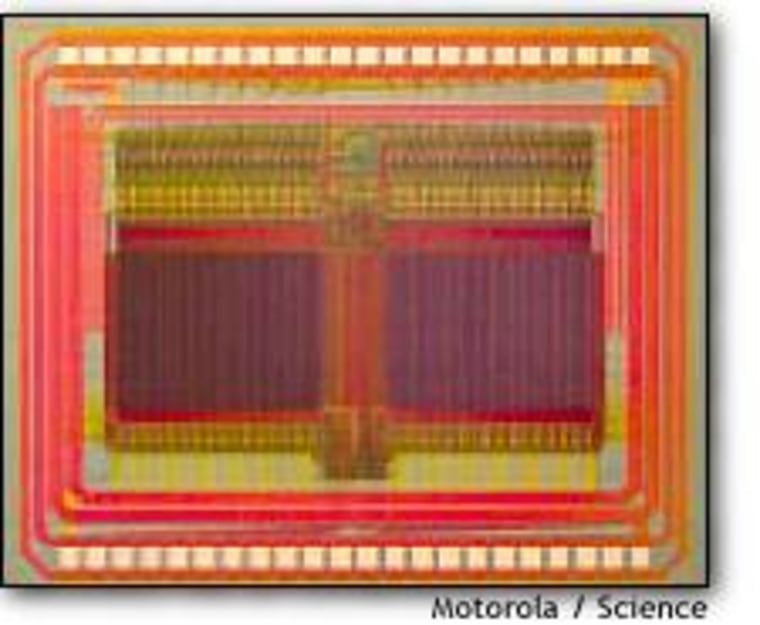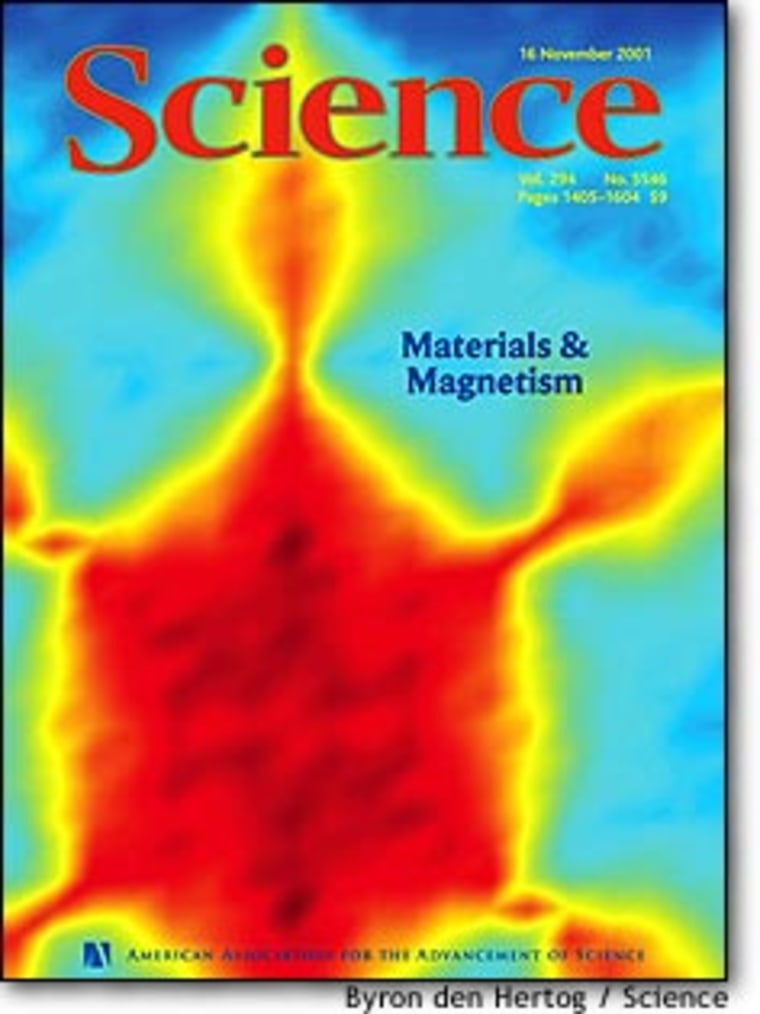Your home computer, your car stereo, and your workplace copy machine — electronics all — operate using the movement of charge-carrying electrons. Although we’ve done quite well exploiting the electron’s charge, scientists are working on harnessing another, more obscure property of the tiny particle — its spin. In Friday’s issue of the journal Science, researchers discuss the state of the art in “spintronics,” and the challenges that must be met before this new breed of electronics can power a variety of future devices.
“Spin” is a convenient term for a property of the electron (and other subatomic particles) that’s tricky to describe outside the quantum realm. In general, spin refers to the angular momentum — the rotational momentum — of a particle that creates its own tiny magnetic field. Spin comes in two flavors: “spin-up” and “spin-down.” When a collection of electrons are all spinning the same way, either up or down, the tiny magnetic fields associated with each electron can add up to one large magnetic moment. Magnetism in some materials such as iron, for instance, comes in part from the cumulative orientation of spin in all the electrons in the material.
Just like the positive/negative duo of charge, the 0s and 1s of current information technology, this up/down pairing makes spin an attractive possibility for encoding and carrying information electronically. The additional information pathway represented by spin will boost the performance of electronic products, leading to smaller and faster devices that don’t consume as much power as traditional electronics, says Science author Stuart A. Wolf of the Defense Advanced Research Projects Agency.
Making its mark
Spin has already made its mark on computer hard drives, thanks to the first big breakthrough in spintronics — called “giant magnetoresistance,” or GMR. The most basic GMR device consists of a sandwich of magnetic materials around a nonmagnetic filling. When spins in the magnetic layers are the same, currents can pass though the material easily. When two layers contain opposing spin, the electrical resistance of the material rises and makes it harder for current to travel through the device. An outside magnetic field is used to switch the spin orientation in one of the magnetic layers to produce this resistance on demand.
This giant magnetoresistance can be as much 100 times stronger than ordinary magnetoresistance, making these materials more sensitive to small changes in magnetic fields. Today, these highly sensitive GMR materials are incorporated into the “read” heads of almost all computer hard drives, allowing a huge leap in their data storage capacity.

A similar, near-future spintronics application is MRAM, a magnetic version of the random access memory used in computers. In contrast with charge-based silicon RAM, these spin memory chips can hold onto their magnetically encoded information even after the computer is turned off and charge-encoded information disappears. This could eliminate “boot-up” time for computers. Commercial MRAM devices should be available within the next two to three years, making a profound impact on the multibillion-dollar computer memory industry, Wolf says.
While these devices demonstrate the power of spin-only devices, researchers envision “hybrid” charge- and spin-based devices, using materials that can carry spin currents and also mesh easily with the semiconductors that make up the bulk of our current electronics. Labs around the world, especially in the United States and Japan, have made “remarkable progress” in developing these multipurpose materials, says Wolf.
The second big challenge facing spintronics researchers is to understand how spin currents move across the boundaries between different materials, another crucial aspect of creating hybrid devices. Research teams have developed a variety of methods for “injecting” spin currents and detecting their progress as they move though materials, searching for techniques that don’t require extremely strong magnetic fields or very low temperatures to operate.
“The whole idea behind using semiconductors as information carriers was based on understanding charge dynamics, and now we have to go and redo those beautiful experiments to understand the dynamics of spin,” says Wolf. “It’s the same learning experience, but we can take advantage of the better tools and more sophisticated analyses that have appeared since then.
“Of course, the last big challenge is to build these devices and show that their performance is better than what we have now,” notes Wolf.
The future of spin
One of the more intriguing futures envisioned for the field is the possibility of quantum computing based on spin. In the quantum world, data can exist as both a “0” and a “1” simultaneously, theoretically allowing all possible calculations involving these data to be completed in one shot. Scientists think that two spins could become “entangled” in this way to form quantum units of information. Some researchers have already experimented with techniques to manipulate electron spins, using ultrafast laser pulses to affect the up or down state of spin.
Spintronics researchers have also demonstrated a spin light-emitting diode, and spin transistors and spin-based optical switches for communications networks are probably another safe bet for the future, say the Science authors. In the near term, we can expect to see substantial improvements that will rapidly become indispensable features in some of our electronic devices.
“These will be extremely capable devices — batteries will last much longer, recharge worries will disappear, and devices like laptops will have instant ‘on.’ These are things that people will very quickly take for granted,” says Wolf.
